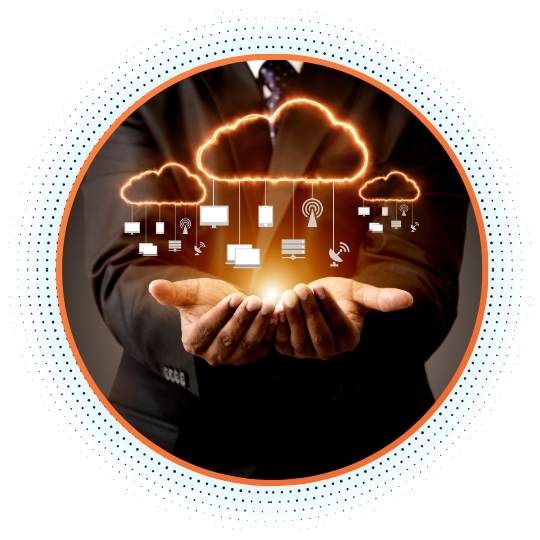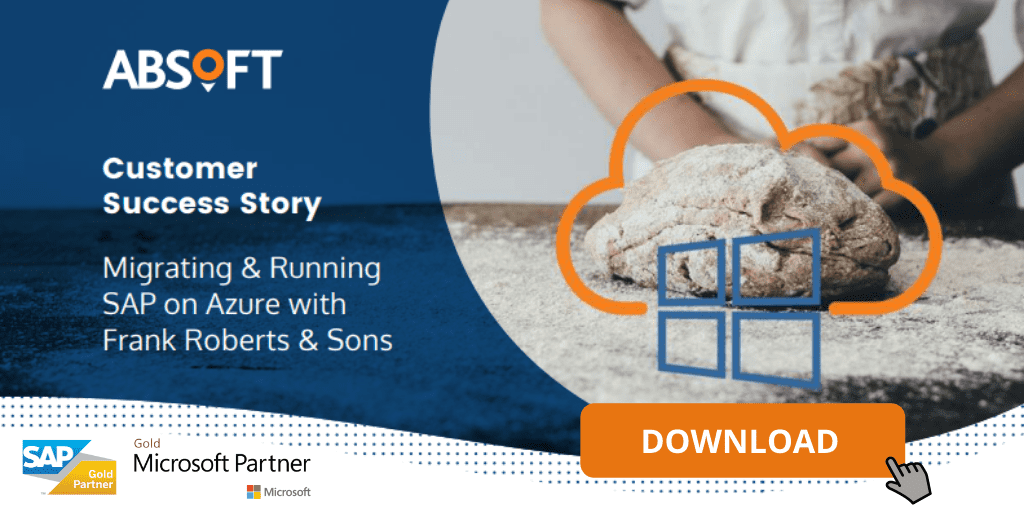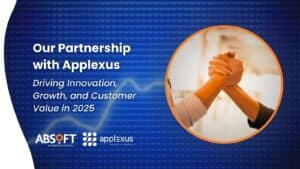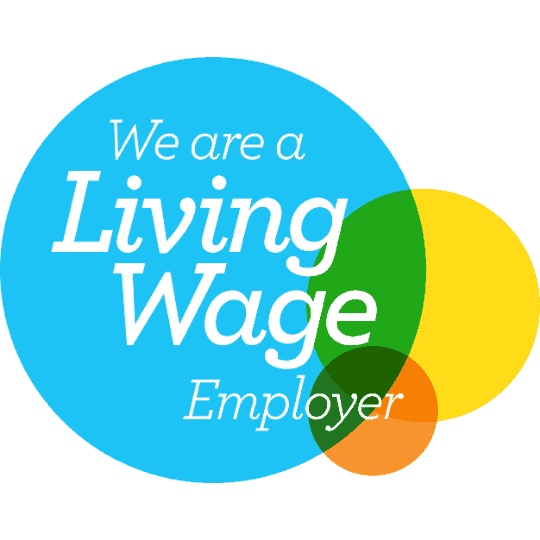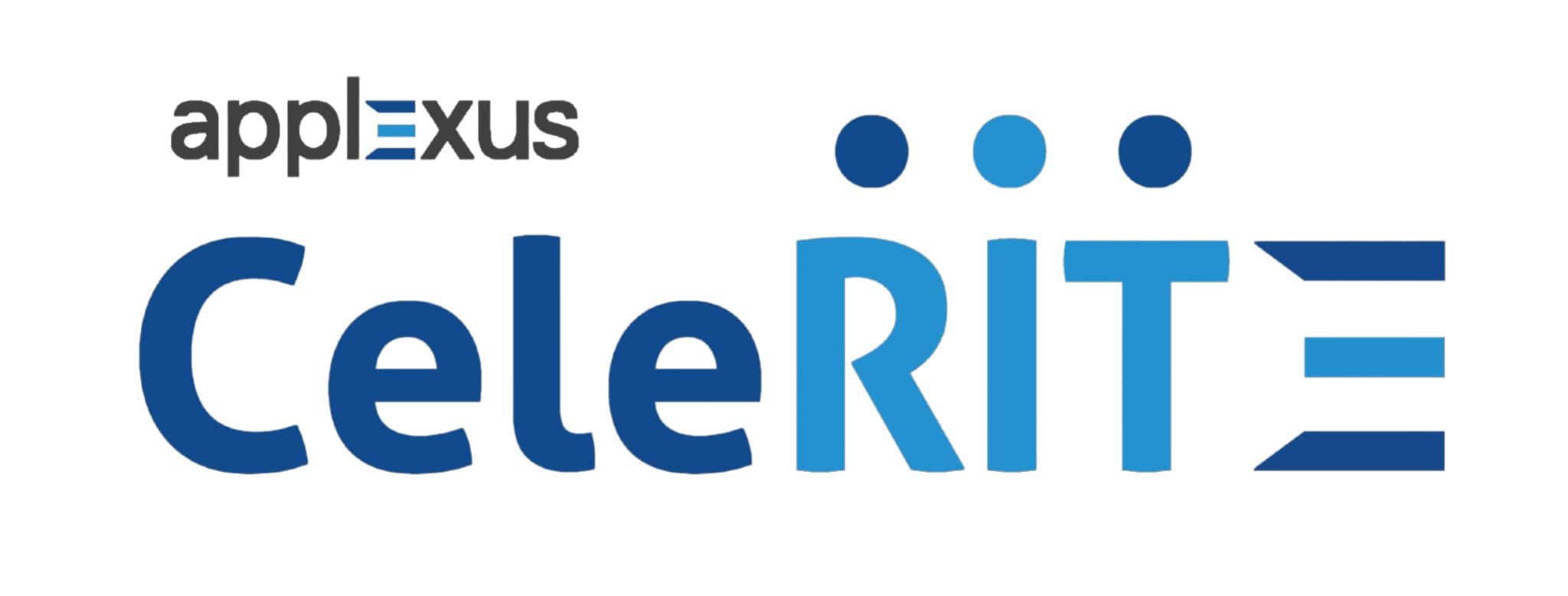With 2027 and the end of standard maintenance for ECC fast approaching, more and more organisations are beginning to seriously contemplate or undertake their move to S/4HANA.
RISE with SAP has been the biggest topic for SAP customers in the past few years, not least because of the confusion on what exactly it contains, what using it entails, and how it compares to running SAP literally on-premise, or running SAP’s on-premise software in a hyperscale cloud natively with your own team or a partner.Â
In this article, we’ll explain:
- What RISE/S/4 Private Cloud Edition is and how it differs from other S/4 offerings
- Which organisations are choosing RISE/S/4 Private Cloud Edition and why
- What preparatory steps you should undertake to confirm that it is the right solution for you
- What an S/4 Private Cloud Edition under RISE implementation looks like
- Plus more FAQs that you asked us during our Journey to S/4HANA – RISE with SAP Webinar.
SAP S/4HANA - what are my options?
There are three main options:
1) S/4HANA Public
Previously known as the essential edition – is hosted and managed by SAP. The public cloud solution is typically offered under a multi-tenant, Software As A Service (SaaS) model which means that compared to previous versions of SAP there are limitations to the degree to which you can tailor the product – after all, you are sharing that product with other SAP customers. To allow for tailoring what industry sectors or customers may require, SAP have provided extensibility capabilities through the Business Technology Platform (BTP) offering which complements SAP cloud products. Further, it supports the development of enhancements and integrations that specific industries and sectors may require – without having to customise the core cloud products.
With the Public version of S/4HANA, you get automatic bi-annual upgrades, which are great for keeping up-to-date with the latest innovations released by SAP, but do need to be planned for to ensure that you have accounted for testing.
In terms of implementation, S/4HANA Public Cloud is suitable for a Greenfield implementation only. The commercial model is subscription based with a minimum of 25 Full User Equivalents – FUEs (correct at the time of going to press). One FUE is roughly equivalent to five individuals in your organisation, though the definition does change according the profile of the use of the system. Due to these changing definitions, you need to check with your SAP Partner or SAP themselves on an appropriate calculation of FUE’s. It is also worth noting that some advanced functionality also requires additional licences.
Analogy: Having S/4HANA Public Cloud, is like renting an apartment in an apartment block where SAP own the building. You are renting one of the flats in that building and whilst you can make cosmetic changes to your flat such as furnishing and decorating, you are not allowed to make any material or structural changes to the property.
Â
2) S/4HANA Private
The main focus for this article, S/4HANA Private Edition, was released in 2021, and is hosted and managed by SAP with options for you to choose a hyperscaler partner of your choice (typically Microsoft Azure, AWS or Google). As with the Public version, the commercial model is subscription based for a fixed tenure.
S/4HANA Private Cloud comes with the highest degree of configuration flexibility amongst the SAP Cloud product options and if you are an ECC customer, S/4HANA Private Cloud is similar to your current solution – if your company has a specific configuration that you wish to retain this option allows you to do so.
Upgrades are applied at your own pace, as long as you stay on a maintained version of the product.
Analogy: S/4HANA Private can be likened to renting a detached property – you don’t own the property but you have more flexibility. With the landlords permission you can paint, change out the front door, do up the garden, but there are definitely limits to the extent of the configurations that can be performed.
Â
3) S/4HANA On Premise
This option is the most flexible version of the product, allowing unrestricted customisation interfaces and integrations. It is available under greenfield (fresh implementation), brownfield (migrate/upgrade from ECC) and other implementation strategies.
The “On-Premise” reference is a misnomer in that it is SAP’s way of referring to the perpetual licensing commercial model associated with the product (different from the subscription model of the other options). In the Perpetual (“on-prem”) licencing model, the customer makes an upfront capital investment in licences and owns them in perpetuity, followed by annual maintenance payments at a certain percentage of the initial licence purchase.Â
So, the name has nothing to do with whether SAP is housed “on-premise”, in a customer or private data centre or indeed in a hyperscalers. Under this option, the system is hosted and managed by either the customer or a third party selected by the customer. Upgrades are applied at your own pace and therefore require considerable planning, but you won’t receive the ongoing innovations mentioned in the S/4HANA Public Cloud option.Â
Analogy:Â To continue our housing analogy, in this case, you own the house and have freedom to make structural and cosmetic changes, but you are looking at finding significant funds to support the initial deposit on your mortgage and you will face significant costs in keeping the property up to scratch.
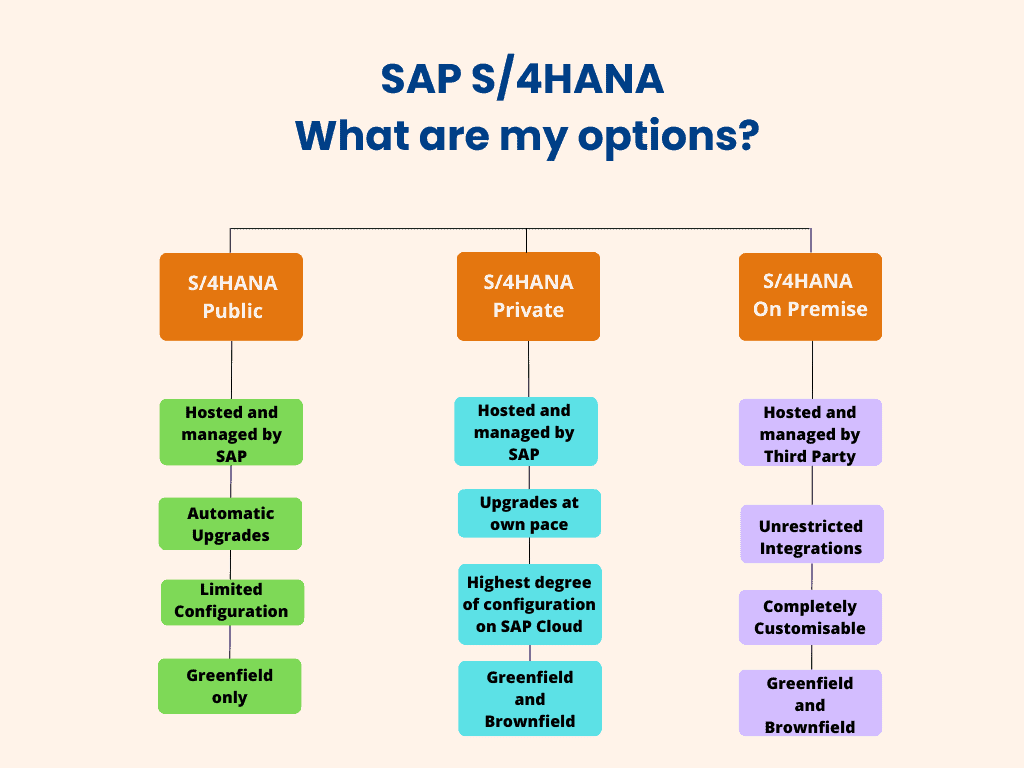
So, what is RISE with SAP then?
You might be wondering, where does SAP RISE fit?Â
RISE is SAP’s offering to fully support its customers in their digital transformation journey.
In essence RISE can be summarised by the following:
- The products offered under RISE, Public and Private, are subscription based products, i.e. a fixed tenure arrangement where you (primarily) pay a periodic fee based on the number of Full User Equivalents that use the SAP products
- You contract with SAP to host and technically manage the SAP landscape – simplifying your contractual landscape
- In the Private cloud option, you can choose your hosting platform (typically Google, Azure or AWS)
- Additionally, RISE offers options to support existing SAP customers in stepping out a journey to S/4HANA and to digital transformation of their business
For clarity, the on-premise S/4HANA offering from SAP’s do not fall under the RISE banner.
What are the benefits of RISE with SAP?
RISE with SAP promises customers a seamless transition to the cloud, eliminating the need for on-premise infrastructure and support. Customers can also benefit from the latest technology advancements in the SAP ecosystem, through the ongoing delivery of innovations such as artificial intelligence, machine learning, and analytics. These technologies enable customers to gain deep insights into their business operations, make informed decisions, and drive efficiency and competitive advantage.
In practical terms, RISE with SAP enables customers to streamline their IT operations, reduce costs and enhance the overall customer experience. Customers can access a range of tools, services, and best practices that help them optimise their SAP environment, improve their security and compliance, and enhance their user experience. Customers can transform their businesses with confidence and focus on what they do best – delivering value to their customers.
SAP are committed to delivering transformation journeys using RISE with SAP S/4HANA. They have enveloped RISE in their own strategy and business goals, whilst on-premise options are being phased out. SAP are therefore more likely to accommodate negotiations for customers who wish to use RISE over on-premise alternatives.
What are some downsides of RISE with SAP?
Some customers have already invested in S/4HANA, and others in either a cloud migration to a hyperscale provider like Microsoft Azure, or in on-premise hardware. And while in those cases, purchasing RISE with SAP is likely to seem like a duplication, a conversation about the solution is worthwhile as SAP are focused on helping customers in those situations.
Whilst many customers will find the contractual simplification associated with RISE attractive – with a simplified subscription model covering the software, hosting and technical management costs for your SAP landscape. Some customers, however, may wish to retain the existing in-house capabilities and/or may be inclined to retain a spread of partners in maintaining their SAP systems
What does the implementation look like?
There are multiple options to move to RISE with SAP S/4HANA Cloud:
- A greenfield migration sees a new implementation of SAP S/4HANA. The greenfield migration is the standard approach as it is not possible to copy an on-premises SAP system into the public cloud edition. Some customers may prefer to use Absoft’s DATAMA to extract data from their on-premises system and prepare it for loading into S/4HANA Public Cloud. Â
- A brownfield migration sees an existing on-premise ECC system migrated into the cloud and converted to S/4HANA Private Cloud Edition in a single-step exercise similar to an upgrade. Alternatively, an existing ECC system can be moved to the cloud first, followed by the upgrade/conversion to S/4HANA treated as a separate secondary project at a later date.Â
- A “Yellowfield” or selective data transition is a variant of a brownfield Private Cloud migration. In this case, some functional areas (perhaps Finance) are converted from a pre-existing ECC environment, whilst, for example, Supply Chain might be treated as a greenfield implementation, but with the data copied using a tool like Absoft’s DATAMA to select for specific organisational values (such as one business unit) or a time period. Â
RISE S/4HANA Public (Greenfield only) or Private cloud (Greenfield, Brownfield or Yellowfield) implementation – is it suitable for me?
Yes, if:Â Â
- your imperative is focusing on your core business, rather than IT.
- you want to simplify the contractual landscape associated with your SAP systems
- you believe that standardised proven best practices will work for your organisation
- your organisation is up for a fit-to-standard (adopt, rather than adapt) mentality
Â
The Greenfield approach means that you will need to retain historical data elsewhere – as it is typically not transitioned into the new S/4HANA system. If retention of historical data in your future S/4HANA system is an absolute requirement then brownfield may be the best option for you.
Please note, however, that a brownfield approach may limit your options to leverage all of the latest and best innovations provided by SAP in S/4HANA.
A last word on Brownfield, for those customers on older versions of ECC, there may be intervening steps required to uplift your current system to a version that is suitable for a migration/upgrade event. You may need to consider the technical debt and necessary preparation pre and post migration. The S/4HANA readiness assessment toolset is an excellent utility to deploy when considering options for existing ECC customers. It will help you identify many of the gaps that you will need to consider when deciding.
Moving to SAP S/4HANA Readiness Assessment
Interest in and adoption of RISE has been growing but many businesses are still in a learning or decision-making stage around how to approach their S/4HANA journey.
For existing ECC customers, SAP provides several excellent tools that Absoft recommends, which are deployed as part of any first steps of planning an S/4HANA Cloud project.
The S/4HANA Readiness Assessment is a technical assessment evaluating your current ECC system and identifying key areas of consideration and integrations that would be affected by the migration and gaps that will need to be filled on the journey – all specific to your business case. Based on the findings an appropriate solution can be recommended including a time and project scope projection.
The SAP Signavio Process Insights offering is also worth looking at, as it provides insights into your current operational business process performance and functional usage of your ECC system. Further, industry benchmarking and areas where S/4HANA could bring significant value to your business are also tracked.
Why should we move our ECC to S/4HANA now?
If innovation, better UX and overall improvement of your processes isn’t enough of a reason, there is one more incentive that might change your mind:
The mainstream ECC maintenance is due to end by 2027. And yes, while there is extended maintenance to 2030, it comes with an additional cost, and most likely that will be dependent on you as a customer of SAP.
“But 2027 is still 4 years away! We have load of time to migrate, right?”
Not really. If you are looking to migrate to S/4HANA, now is the time to start preparing yourself for that step. The average project requires two to three years to get finalised. Considering the time for the decision-making process, that does not leave much time to delay the start of the conversation.
For 2023, present day, we recommend to start looking at the assessments -the readiness assessment, process, discovery and Fiori app recommendations. Some of them are technical and can be run in the background, hence these shouldn’t need too many teams to run through them. However, collecting and analysing data on how these are going to be impacting your business requires time.
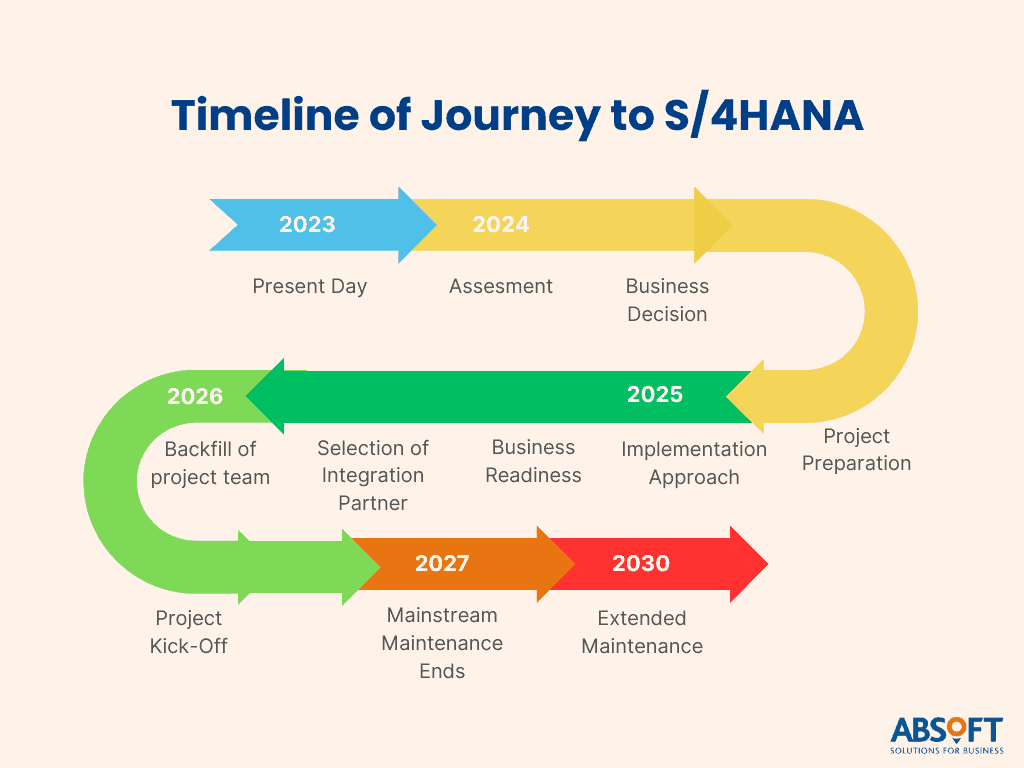
Frequently Asked Questions
Migration:
Can you move to RISE on ECC or ERP 6.0 and then convert to SAP S/4HANA at a
later point?
There are options to move into a RISE model with different approaches to using SAP S/4HANA including 1-step-migrate to the cloud at the same time as converting to S/4HANA or 2- step-migrate your current ECC system to the cloud and converting in a second step at a later stage.
A conversation with your SAP account manager or Absoft will help clarify your options further.
If you use RISE with SAP, do you need to move interfaces SAP Process
Orchestration (SAP PO) into SAP Business Technology Platform (BTP) Integration Suite?
SAP BTP is the future of integration technology from SAP. The standard approach with RISE with SAP is to move each of your interfaces from SAP Process Orchestration (SAP PO) or Process Integration (SAP PI) into Integration Suite.
SAP will review the options with you around running SAP PO in a RISE model in exceptional circumstances, for a specific business reason to continue using it with a lift-and-shift migration.Â
Is it recommended to move to the new GL prior to moving to SAP S/4HANA if
you use a greenfield approach to RISE with SAP?
There is no need to consider anything in your existing on-premises landscape when using the greenfield approach to RISE as a new implementation is undertaken.Â
The SAP S/4HANA Migration Cockpit handles many data load situations to greenfield S/4HANA This includes reading data from source ERP systems which does introduce some prerequisites. In the lght of these complexities, many customers are using tools like Absoft’s DATAMA data migration toolset to migrate data to SAP S/4HANA.
Is there an option to move selected data in RISE with SAP, not all of your
SAP system?
There are a several available technologies that allow selective migration into RISE.
Absoft’s DATAMA data migration toolset enables selection by organisational values or
a date range, and is used to reduce data volume as well as for merger and acquisition carve-out or combine scenarios. Â
Technical:
Is SAP GUI still available with RISE with SAP S/4HANA, private edition?
Yes it is. SAP GUI is the familiar SAP client software used since the nineties to run transaction codes and programs. The vast majority of SAP transaction codes are still available after conversion to SAP S/4HANA on-premises and Private Edition options.
All editions of SAP S/4HANA offer an entirely new role-based and intuitive user interface that is now available for most of the application, covering most use cases. It is very strongly recommended to move users into a new Fiori UX so that you can leverage the new functionality in S/4HANA and business transformation, although the option to use the SAP GUI provides an interim step to enable the use of RISE and S/4HANA without significant business change in all modules simutaneously.
SAP S/4HANA Cloud public edition offers no option to use SAP GUI or run transaction codes. Rather, the user interface is based on SAP Fiori web applications.
Is the Implementation Guide (IMG) and transaction SPRO still available with RISE with SAP S/4HANA Cloud, private edition?
Yes, it is. SAP S/4HANA private edition is configured in the same way as SAP S/4HANA on-premises with the familiar SPRO transaction and the IMG. Consequently, the same configuration that was used on-premises can be used in the cloud.Â
In the public edition, the Central Business Configuration (CBC) application is used to perform configuration instead of SPRO. Whilst the two are very different , CBC does include options that SPRO users will find familiar.
Can we still create Z programs, implement enhancement points and BAdIs in RISE with SAP S/4HANA Cloud, private edition?
Yes. RISE with SAP S/4HANA Cloud, Private Edition includes the options to perform development in the system. Furthermore, it can run developments that were previously created on-premises.
but…
Private Edition is a step towards fully cloud-based standardised software, so it is strongly recommended to adopt n “keep the core clean” approach before and during the deployment of Private Cloud Edition. That means any developments using traditional methods like Z programs should be critically evaluated. If possible, these methods should be implemented as side-by-side extension in SAP BTP or another suitable application hosting platform.
SAP S/4HANA offers a huge number of APIs in comparison to SAP ERP 6.0. This enables custom requirements to be addressed by a side-by-side application that is hosted in BTP. The user experience is seamless, so applications are deployed in the same Fiori Launchpad. Additionally, RISE includes credits to make use of BTP, partly to enable a clean core with developments outside of the S/4HANA system.
Commercial:
What is the biggest company you know of that has chosen RISE with SAP?
SAP regularly publish press releases when companies choose RISE. Notably, one such large company is include Microsoft.
Many of the earlier wins have been SAP service providers updating their internal system, or, in Microsoft’s case, the provider of one of the main hyperscale providers that underpins RISE hosting.Â
Some major wins outside of the SAP industry include Air India, Ducati and Lockheed
Martin.Â
How is RISE with SAP licenced?
RISE licencing replaces the perpetual licence to use SAP software, the ongoing maintenance costs, and includes hosting plus a basic technical managed service in one single contract.Â
It is licenced via Full-User Equivalents or FUEs, which is essentially a user count. There is an additional cost for extra hosting requirements and for additional products.
The licencing should be agreed with SAP or a reseller partner. A detailed bill of materials will cover all additional products needed and the number of FUEs for S/4HANA Cloud.Â
It is strongly recommended not to engage in any kind of third-party or unilateral licencing calculation, and to take licencing information found in articles like this one to be indicative. Consequently, all licencing must be agreed with SAP or a suitable reseller. If you purchase SAP licences from Absoft, contact your account manager for more information on RISE with SAP.Â
What is a Full-User Equivalent or FUE?
SAP cloud products can be licensed by a number of Full-User Equivalent licenses. An FUE provides a simple measure of the size of both the software and hosting requirement. Thus, it is well suited to be the metric that is central to the S/4HANA Cloud licensing model.
The exact definition of an FUE varies over time and depends on several details, but generally one FUE is equal to:
- one advanced user of SAP S/4HANA. An advanced user is likely to make full use
of SAP S/4HANA and use a range of functions to do a major part of their
job or; - five core users, who may use SAP S/4HANA functionality to a lesser extent than an advanced user or;
- thirty self-service users, who will only use SAP S/4HANA occasionally to approve a purchase or similar, through specific self-service applications.
How do we map our existing SAP licenses to the correct number of FUEs?
There is an unambiguous mapping of SAP S/4HANA licences to FUEs in the Cloud
Service Use Descriptions.
If you do not have SAP S/4HANA licence types or numbers already, you should work with your SAP account executive or reseller partner in the first instance. If you buy SAP
licences from Absoft, contact your account manager.
There are different approaches to reach a suitable bill of materials (BOM) and licence count for SAP S/4HANA in all editions and guides. Usually this includes a Digital Discovery Assessment (DDA) and creation of a suitable solution architecture.Â
Are there hidden costs or extras required for RISE with SAP?
Besides buying the correct number of FUEs for SAP S/4HANA Cloud, it is also important to include additional products that are needed to meet the business requirements and any additional hosting requirements such as extra hardware capacity.
Working with SAP or a suitable reseller is essential to build up a bill of materials that doesn’t have any missing costs. SAP’s Digital Discovery Assessment (DDA) is essentially mandatory to understand the requirements in detail, generate a list of scope items and the correct bill of materials to deliver them.
Are there any gaps between what SAP offers with RISE and what is typically
expected from SAP basis support or technical managed service?
The technical management service provided with RISE is very rigid and structured, covering specific activities related to running the servers, operating systems and databases for the SAP applications.
Many functions typically run by an SAP basis team and/or partner are not in the scope of SAP’s technical managed service. This includes architecture design, security, user management, authorisations, printer management, troubleshooting, integration and numerous other topics.Â
We have also found that most customers benefit from partner management of the SAP technical managed service for topics such as update and maintenance planning, test management and holding SAP to account for SLA compliance.Â
If you have an internal team that currently support an on-premise SAP system, it’s important to understand what they will need to do before, during and after a move to RISE. Providers like Absoft also provide specific managed service scopes to manage an RISE with SAP contract and fill the gap to customer expectations.





